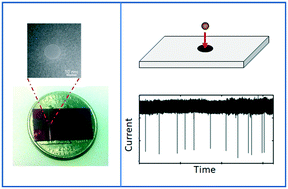Recent advances in integrated solid-state nanopore sensors
Abstract
The advent of single-molecule probing techniques has revolutionized the biomedical and life science fields and has spurred the development of a new class of labs-on-chip based on powerful biosensors. Nanopores represent one of the most recent and most promising single molecule sensing paradigms that is seeing increased chip-scale integration for improved convenience and performance. Due to their physical structure, nanopores are highly sensitive, require low sample volume, and offer label-free, amplification-free, high-throughput real-time detection and identification of biomolecules. Over the last 25 years, nanopores have been extensively employed to detect a variety of biomolecules with a growing range of applicatons ranging from nucleic acid sequencing to ultrasensitive diagnostics to single-molecule biophysics. Nanopores, in particular those in solid-state membranes, also have the potential for integration with other technologies such as optics, plasmonics, microfluidics, and optofluidics to perform more complex tasks for an ever-expanding demand. A number of breakthrough results using integrated nanopore platforms have already been reported, and more can be expected as nanopores remain the focus of innovative research and are finding their way into commercial instruments. This review provides an overview of different aspects and challenges of nanopore technology with a focus on chip-scale integration of solid-state nanopores for biosensing and bioanalytical applications.

- This article is part of the themed collection: Lab on a Chip Review Articles 2021


 Please wait while we load your content...
Please wait while we load your content...